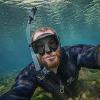

Aquatic Plant ID
#1

Posted 16 October 2014 - 10:14 PM

#2
 Guest_jetajockey_*
Guest_jetajockey_*
Posted 17 October 2014 - 03:00 AM
#3

Posted 17 October 2014 - 06:26 PM

Here is a link to the full size image: http://www.isaacszab...FA/Hydrilla.jpg
#4

Posted 17 October 2014 - 06:30 PM
#5
 Guest_gerald_*
Guest_gerald_*
Posted 17 October 2014 - 06:52 PM
#6
 Guest_Skipjack_*
Guest_Skipjack_*
Posted 17 October 2014 - 07:30 PM
#7

Posted 18 October 2014 - 04:19 AM

The flowers seem small to me, which would point toward Hydrilla, but I don't have enough experience with either species to really know. There are reports online that Hydrilla occurs at this location (Salt Springs, FL), but that doesn't necessarily mean that it was identified correctly or that Egeria doesn't also occur there.
#8
 Guest_gzeiger_*
Guest_gzeiger_*
Posted 18 October 2014 - 05:17 AM
#9
 Guest_gerald_*
Guest_gerald_*
Posted 18 October 2014 - 11:54 AM
#10

Posted 19 October 2014 - 12:49 AM






#11
 Guest_Kanus_*
Guest_Kanus_*
Posted 19 October 2014 - 02:07 PM
#12
 Guest_gerald_*
Guest_gerald_*
Posted 19 October 2014 - 06:40 PM
#13
 Guest_trygon_*
Guest_trygon_*
Posted 19 October 2014 - 07:50 PM
It looks like we're chasing the same rabbit. Who would've thought to target this stuff. Mine are about like yours.
#14

Posted 19 October 2014 - 08:59 PM
Yes Bryce, I have never thought to target this stuff or that I would have a reason to learn so much about its identification. It's just a lucky coincidence that I happened to have a couple decent snapshots of it in my image archives.
#15
 Guest_trygon_*
Guest_trygon_*
Posted 20 October 2014 - 07:09 AM
#16
 Guest_gerald_*
Guest_gerald_*
Posted 20 October 2014 - 10:42 AM
#17

Posted 20 October 2014 - 10:39 PM
#18
 Guest_gerald_*
Guest_gerald_*
Posted 21 October 2014 - 11:07 AM
... and I feel like I could easily identify it if I had it in hand.
#19

Posted 22 October 2014 - 08:28 AM
#20

Posted 19 November 2014 - 01:29 PM
Edited by brannon67, 19 November 2014 - 01:33 PM.
0 user(s) are reading this topic
0 members, 0 guests, 0 anonymous users









